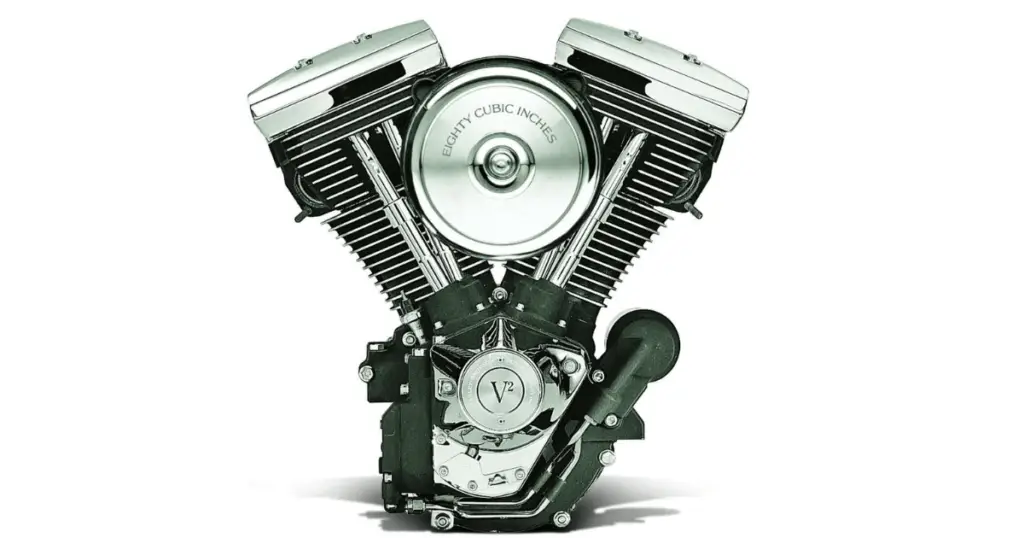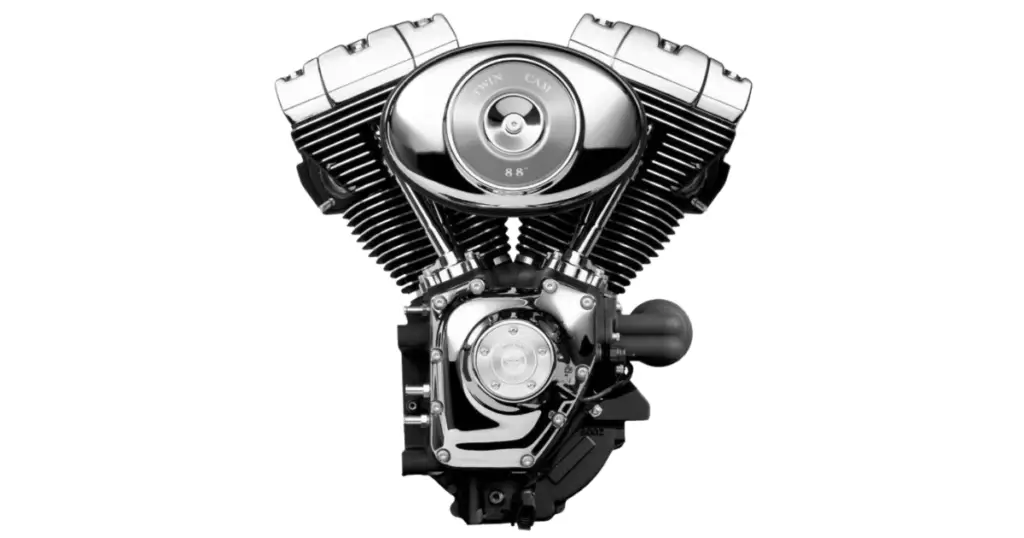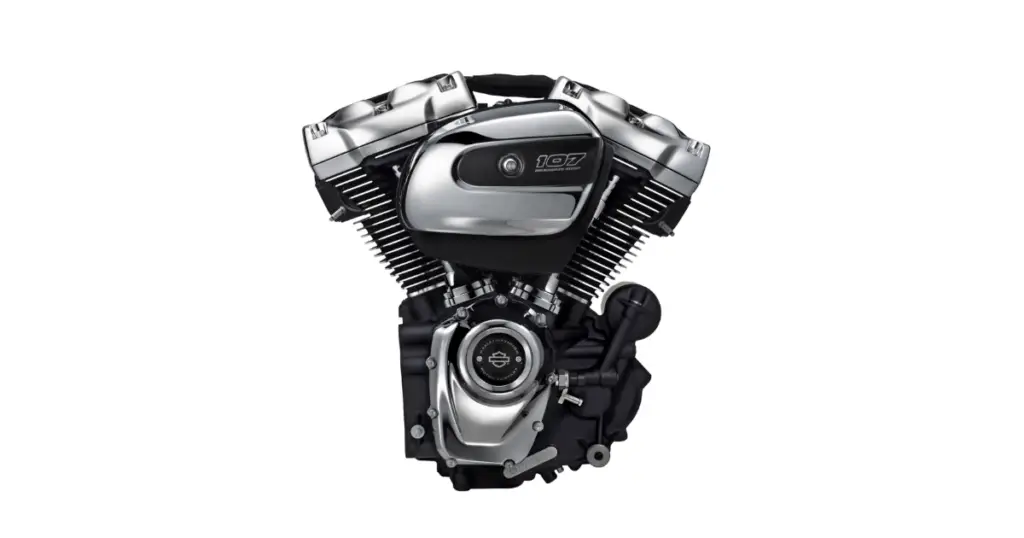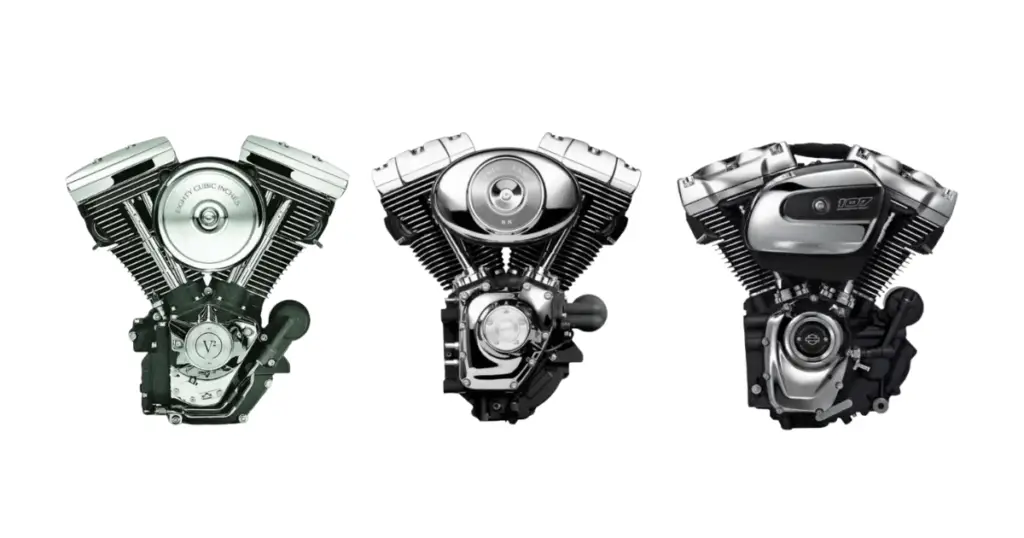In the world of Harley-Davidson motorcycles, the engines are as legendary as the bikes themselves. Over time, the company has introduced different engines, each marking a milestone in its innovation journey. The Evolution, commonly known as the Evo, the Twin Cam, and the Milwaukee-Eight are three engine designs that define eras in Harley-Davidson’s storied history. Each engine reflects Harley-Davidson’s commitment to performance, rider experience, and the pursuit of motorcycling excellence.
The Evolution engine, introduced in the 1980s, was a significant advance in engine technology, representing a leap forward in power and reliability compared to its predecessors. It served as a foundation for Harley-Davidson, solidifying its place in the world of heavyweight motorcycles. Following the Evolution, the Twin Cam engine arrived in the late 1990s, offering a higher capacity and more potential for power and refinement, meeting the demands of a new generation of riders.
The latest in this lineage is the Milwaukee-Eight engine, which takes its name from Harley-Davidson’s hometown and the number of valves it features. It is the most current manifestation of the manufacturer’s continuous improvement with a focus on increased power, smoother operation, and enhanced rider experience. Each engine iteration embodies the spirit of Harley-Davidson, showcasing a timeline of engineering triumphs that not only honor the past but also pave the way for the future.
Evolution of Harley Engines
Harley-Davidson motorcycles have undergone significant engineering transitions from the Evo to the Twin Cam and, most recently, to the Milwaukee-Eight engine. Each transition marked advancements in power, performance, and technical sophistication.
The Birth of Evo

In 1984, Harley-Davidson introduced the Evolution, commonly known as the Evo engine. It was a major upgrade from the previous Shovelhead engine, offering improved reliability and performance. The Evo was air-cooled and boasted aluminum heads and cylinders that helped to reduce the engine weight and improve air cooling efficiency.
Related: Best Spark Plugs for Harley Davidson Evo: Bikes Evolve Today
Transition to Twin Cam

The Twin Cam engine made its debut in 1999 as the successor to the Evo. The Twin Cam, so named for its two camshafts, moved away from the Evo’s single-cam design. It delivered more power and torque, due in part to its increased displacement and better oil pump. This engine was offered in various models, including the 88, 96, 103, and 110 cubic inch versions.
Related:
– Best Spark Plugs for Harley Davidson Twin Cam: Full Guide
– Finding Best Oil for Harley Davidson Twin Cam Engines (Guide)
The Arrival of Milwaukee 8

Harley-Davidson introduced the Milwaukee-Eight engine in 2016, defined by its eight valves and improved performance. It boasted a smoother, cooler, and more efficient operation compared to the Twin Cam. Amongst its variations, the Milwaukee-Eight 107 accelerates quicker than the Twin Cam High Output 103, while the 114 version outperforms the Twin Cam 110 regarding acceleration.
Harley’s Evo vs Twin Cam vs Milwaukee 8 Engines: Design and Engineering Comparison

The design and engineering of Harley-Davidson engines embody the fusion of mechanical artistry and practical engineering. This section sheds light on the intricate details and functional differences among the Evo, Twin Cam, and Milwaukee 8 engines, focusing explicitly on their structures, camshaft mechanics, and cooling systems.
Comparing Engine Structures
The Evolution (Evo) engine showcases a robust design with a single camshaft and a compression ratio that typically remains around 9:1. It relies on two valves per cylinder, and its solid structure allows for significant durability. Evo’s simpler design translates to less torsion and compression stress on the engine parts.
In contrast, the Twin Cam features a chain-driven camshaft system, which operates two camshafts, one for intake and one for exhaust valves. This design facilitates a higher compression ratio and four valves per cylinder, promoting better air and fuel mixture inflow and exhaust outflow—elements that contribute to stronger performance.
The Milwaukee 8 (M8) evolves the design further, with an improved four-valve design per cylinder that enhances airflow and results in a more efficient combustion process. Generally, engines with more valves per cylinder can produce more power at high RPMs due to the increased air flow.
Camshaft Mechanics
The mechanics behind the Camshaft designs in these engines reflect significant engineering choices. The Evo sticks to a single, gear-driven chain-driven camshaft, simplifying maintenance and reducing potential points of failure.
Twin Cam engines introduce dual cams, which help in optimizing valve timing for better torsion and compression, thus increasing power and efficiency. Precise camshaft control means a corresponding improvement in the motorcycle’s throttle response and torque delivery.
With the M8, the focus remains on harnessing maximum power while reducing mechanical complexity. Despite having two camshafts, its design is streamlined for performance, taking advantage of the four-valve cylinders for swifter valve operation.
Cooling Systems: Air vs Liquid
Harley-Davidson has traditionally used air-cooled engines due to their simpler design and characteristic sound. The Evo and Twin Cam adhere to this tradition, dispersing heat directly into the air, which although effective, can present challenges in maintaining optimal engine temperatures during prolonged use.
The Milwaukee 8 subtly shifts towards a combination of air and liquid-cooled systems for its high-output models. Utilizing liquid-cooling around the cylinder heads helps manage and maintain engine temperatures more efficiently. This dual cooling approach effectively manages the engine’s thermal load, particularly in high-compression scenarios, providing a stable operating temperature range.
Performance Metrics
When comparing the Evolution (Evo), Twin Cam, and Milwaukee 8 (M8) engines from Harley-Davidson, specific performance metrics such as power and torque, efficiency and fuel economy, and reliability and durability provide a clear perspective on their capabilities.
Power and Torque
The Evolution engine, while a significant improvement over its predecessors, generally delivers less power and torque compared to the later Twin Cam and Milwaukee 8 engines. The Twin Cam, known for its solid power delivery, has been surpassed by the Milwaukee 8 series. Specifically, the Milwaukee-Eight 107 accelerates faster, showing an 11 percent quicker sprint from 0-60 mph and a 11 percent quicker pace from 60-80 mph in top gear than the Twin Cam High Output 103. The Milwaukee-Eight 114 outperforms the Twin Cam 110 with an 8 percent faster acceleration from 0-60 mph and 12 percent quicker from 60-80 mph.
Efficiency and Fuel Economy
The Milwaukee 8 engines offer enhanced fuel economy and efficiency over the older Twin Cam and Evolution engines. With their refined internal design, including a single four-valve cylinder head, the M8 engines provide better combustion and lower emissions. Harley-Davidson’s commitment to optimizing efficiency is most evident in the Milwaukee 8, which stands as their most contemporary example of efficient V-twin engineering.
Reliability and Durability
Reliability and durability are trademarks of Harley-Davidson engines. The Evolution engine established a reputation for longevity. The Twin Cam, while introducing more complexity with its dual camshafts, required more maintenance but typically proved durable. The Milwaukee 8 engines, with their improved cooling and refined internals, potentially offer increased reliability and service intervals. It’s important to note that maintenance practices and riding habits contribute significantly to the long-term durability of all these engines.
Model-Specific Applications
Harley-Davidson’s evolution of motorcycle engines has led to distinct characteristics and applications across different models. This section explores how the Evo, Twin Cam, and Milwaukee-8 engines were applied to the Touring, Softail, Sportster, and Dyna lines, impacting performance and rider experience.
Touring and Softail Differences
Harley-Davidson Touring models are designed for long-distance comfort and high-load capacity, often incorporating the latest engine technology for a smooth ride with ample power. These are the features found in popular Touring models:
- Milwaukee-8: Introduced across Touring models starting from late 2016, featuring precision cooling and enhanced performance.
- Twin Cam: Previously equipped in Touring models until the Milwaukee-8 took precedence, noted for its robust build and longevity.
Softail models are built for a classic look and a smoother ride, achieved through hidden rear suspension. Engines that defined the Softail experience include:
- Twin Cam 88B: Used in models like Heritage Softail Classic and Fat Boy, offering a counterbalanced version for reduced vibrations.
- Milwaukee-8: Found in newer Softail models, providing a smoother and more responsive ride with less heat felt by the rider.
Sportster and Dyna
The Sportster is a line that typically housed smaller displacement engines for nimble urban cruising and accessible performance, mainly using the Evolution (Evo) engine for reliability and easier customization. Here’s how the engines played out:
- Evolution: A mainstay in Sportster models due to its smaller size and versatile performance.
Dyna models, known for their performance-oriented design, fuse the traditional Harley look with a more aggressive riding stance. The engine applications within the Dyna series include:
- Twin Cam: Dominated the Dyna line offering a balance between power and manageability.
- Evolution: Earlier Dyna models such as the Dyna Wide Glide featured Evolution engines before the transition to the more powerful Twin Cam.
Harley-Davidson’s careful engine assignments to these varied models reflect a commitment to matching power with purpose, whether it’s for cruising city streets or touring open highways. Each engine type enhances the motorcycle’s design intent, ensuring a ride quality that aligns with the rider’s expectations and the model’s heritage.
Rider Experience
The rider experience with Harley-Davidson engines is often a decisive factor for enthusiasts. It encompasses the tangible aspects of handling and vibration, as well as the intangible feel, such as sound and aesthetics, which together influence riding style and personal preference.
Handling and Vibration
Handling:
- Evo: Known for a more refined ride with less vibration due to its single cam design.
- Twin Cam: Offers a balanced feel but may transmit more vibration to the rider.
- Milwaukee 8: Enhanced smoothness and acceleration, providing a more comfortable handling experience.
Vibration:
- Evo: Minimal due to rubber mounting and a more efficient engine design.
- Twin Cam: Noticeable, especially at idle; could be fatiguing over long rides.
- Milwaukee 8: Significantly reduced vibrations, attributed to counter-balancers and refined engineering.
Sound and Aesthetics
Sound:
- Evo: Recognizable Harley rumble but quieter than later models.
- Twin Cam: Louder exhaust note with a deeper character.
- Milwaukee 8: A throaty, rich roar that is distinct yet smooth, aligning with modern noise regulations.
Aesthetics:
- Evo: Classic styling that appeals to purists, with its square and flat head design.
- Twin Cam: Robust appearance, preserving the Harley tradition with a more aggressive look.
- Milwaukee 8: Contemporary design that integrates with state-of-the-art styling features.
In terms of transmission and clutch, each engine offers its unique feel that complements the overall riding experience. The Evo may have a more vintage mechanical feel, while the Twin Cam and Milwaukee 8 feature more modern and refined systems that are usually easier to operate and may contribute to faster acceleration and smoother gear shifts. Riders’ personal preferences often guide their choices, with some preferring the classic character of the Evo, while others may choose the improved technology and performance of the Milwaukee 8 or the balance of the Twin Cam.
Frequently Asked Questions
This section addresses common inquiries about the performance, design, reliability, maintenance, power figures, and riding experience of Harley-Davidson’s Evo, Twin Cam, and Milwaukee-Eight engines.
Which Harley-Davidson engine offers the best performance: Evo, Twin Cam, or Milwaukee-Eight?
The Milwaukee-Eight engines are known for their improved acceleration and overall performance compared to their predecessors. Specifically, the Milwaukee-Eight 114 accelerates 8 percent quicker from 0-60 and 12 percent quicker from 60-80 than the Twin Cam 110.
What are the key differences in the design and technology between the Evo, Twin Cam, and Milwaukee-Eight engines?
Evo engines, built from 1984 to 1999, feature a single camshaft and are known for their simplicity and durability. Twin Cam engines, produced from 1999 to 2017, introduced dual camshafts and offered higher displacement and power. The Milwaukee-Eight, introduced in 2017, brought in four-valve cylinder heads and a counter-balancer to reduce engine vibration.
Can you compare the reliability of the Evo, Twin Cam, and Milwaukee-Eight engines in Harley-Davidson motorcycles?
Historically, Evo engines have a reputation for being highly reliable due to their simpler design. Twin Cam engines faced some reliability issues earlier in their lifespan but improved over time. The Milwaukee-Eight is still relatively new, but its advanced design suggests a focus on reliability and longevity.
What are the maintenance considerations when choosing between an Evo, Twin Cam, or Milwaukee-Eight engine?
Evo engines may require more regular maintenance due to their older design, but they are often easier and less costly to work on. Twin Cam and Milwaukee-Eight engines may require less frequent maintenance due to modern advancements but can be more complex and potentially more expensive to service.
How do the power and torque figures of the Harley-Davidson Evo, Twin Cam, and Milwaukee-Eight engines compare?
Power and torque figures have generally increased with each new engine generation. The Twin Cam marked a step up from the Evo, and the Milwaukee-Eight has shown further improvements with the 114 engine version offering significant advancements over the Twin Cam in terms of both power and torque.
In terms of overall riding experience, how do the Evo, Twin Cam, and Milwaukee-Eight engines differ?
Each engine offers a distinct riding experience. The Evo provides a classic, raw feeling with a visceral connection to the road. The Twin Cam delivers more power and a smoother ride compared to the Evo. The Milwaukee-Eight offers even smoother power delivery, reduced vibration, and a more refined riding experience.